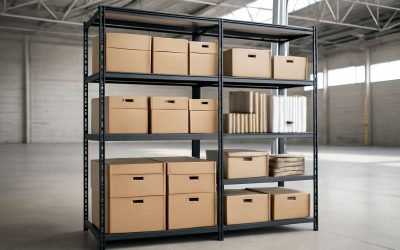
Warehouse racking and shelving are storage structures used to support products, materials and loads within a warehouse. While some companies use shelving to store lighter items that can be maneuvered by hand, most warehouses utilize a combination of racking and shelving to handle the heavier loads. The type of racking and shelving you choose depends on your product types, warehouse size and other factors, but the most important consideration is the weight of the products or materials being stored.
A warehouse racking system typically consists of upright frames with horizontal beams that support shelves. The uprights and beams are held together by baseplates or footpads that connect the frame to the floor. The baseplates are often welded to the frame for extra strength and security. The beams are then supported by braces that are welded or bolted to the top and bottom of the frame. The braces help to distribute the weight of the shelves and load evenly.
Racking and shelving are usually made of metal, but they can also be constructed from wood or other materials. Aside from the material type, the most significant factor in choosing a racking or shelving unit is its location in your warehouse. Generally, you will want to keep heavy loads away from walkways and shipping and receiving areas so they don’t interfere with the movement of inventory and equipment. If possible, you should avoid putting any heavy loads on the floor, as they can cause damage or injury to employees and forklifts.
Depending on your warehouse space, you may need to determine if you have the capacity to store more inventory in your existing warehouse. If you do not, there are several steps you can take to increase your warehouse’s storage capacity.
One option is to install racking over dock doors or above cross aisles. This is a simple and effective way to add storage without interfering with shipping, receiving or forklift operations. Another way to optimize storage is to separate your inventory by size. If you have multiple sizes of unpackaged parts, sort them by size and then store like-sized items together. This will minimize the time it takes to find a particular item and maximize your warehouse space.
The most common racking systems are selective and pallet racking. Selective racking is placed in rows that are either back to back or against walkways. It is a low-density system that offers high pick selectivity. Pallet racking is a high-density system that requires fewer aisles. It is ideal for storing bulk materials, such as lumber or bricks, since it supports stacks of pallets to conserve space. The system is a good choice for industries that practice first-in, first-out (FIFO) product flow, as the oldest pallets are taken off the pallets and sold before newer stock is put into storage. FIFO storage is an excellent option for food, beverage and pharmaceutical companies with expiration dates.



0 Comments